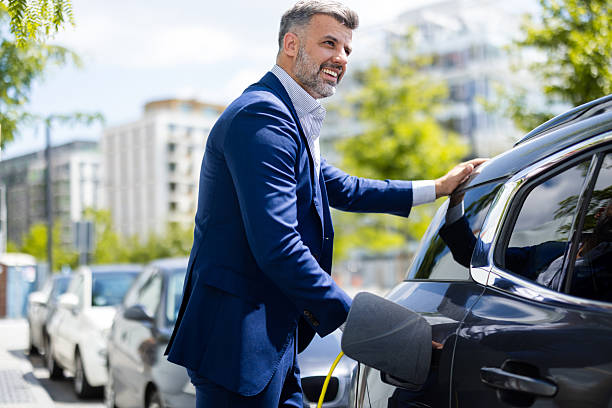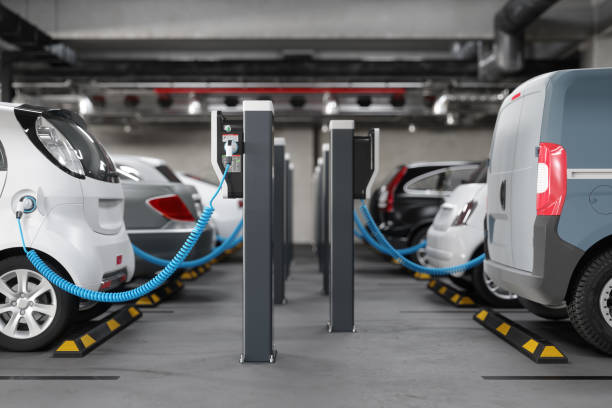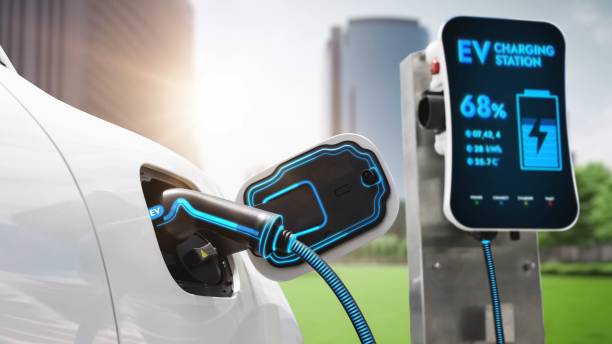The slow charging of electric vehicles in Colombia

In 2025, for the second consecutive year, Colombia will have a record sales record for electric cars , placing the country among the leaders in the region; very good news for the industry and for the energy transition. To date, more than 6,000 vehicles of this type have been sold, and the growth compared to the previous year, which was already a record, is more than 252 percent.
However, what is failing in this super-acceleration of demand are the options available to owners to charge them properly , especially on public roads.

The slow charging of electric cars in Colombia. Photo: iStock
Currently, the charging infrastructure for electric vehicles in Colombia is innocuous, as finding a decent charger outside the outskirts of major cities is a challenge.
This scenario of limited private charging options and none from government sources is short-circuiting massive demand, limiting the mobility of electric cars, which are limited to predominantly urban routes.
All brands offer diverse alternatives to buyers to attract them to electric mobility, and they start with the promise of ranges that exceed 200 km and can reach up to 450 km per charge, a range that helps to increasingly stretch the already proven, factory-installed technology.
Added to these improvements are the "extras" that both importers and dealers offer to differentiate themselves. Among the most comprehensive offerings is the inclusion of a home charger with the vehicle purchase. Brands such as Chery and MG include it, albeit with some restrictions. BYD, the brand that sells the most electric vehicles in Colombia, does not include a charger or an emergency or travel kit.

The slow charging of electric cars in Colombia. Photo: iStock
The vast majority offer an emergency plug or adapter that can be used to connect the vehicle to the 110-volt or three-phase power supply in your home. But very few, if any, offer a multi-adapter kit.
This means that, without any intervention, the average charge of a vehicle with a 54 kWh battery can take between 20 and 24 hours on a 110-volt outlet. If the battery is larger, the time will increase considerably.
There's also the option of home wall chargers. These are sold in two capacity variants: 7.4, 11, and even 22 kWh, at affordable prices and from different brands. However, they require installation, including a preliminary study, which must be added to the cost of the charger and whose price is directly proportional to the complexity of the installation.
This topic has been thoroughly studied and reviewed, and the various companies offering this facility are able to overcome almost any obstacle for those interested and able to finance it. But the issue goes further.
What are the real options for people with electric cars to charge them outside their homes? To answer this question, Vehículos spoke with Ricardo Salazar, manager of Los Coches and one of the most knowledgeable people on electric car charging in Colombia.

The slow charging of electric cars in Colombia. Photo: iStock
According to Salazar, there was a previous stage in this process of car consumers' adoption of electric mobility, in which it was promised that a charger would be found on almost every corner. But this hasn't happened.
Currently, says Salazar, there are two types of charging when it comes to public or private infrastructure outside homes: alternating current (AC) and direct current (DC).
The poor fast charge DC charging is where power from the grid enters the car's battery directly. It's the most powerful type of charging, and fast chargers rely on it. Depending on the company offering them, these come in capacities from over 50 kW, to 100 kW, 130 kW, and even 150 kW.
If someone wants a DC charger at home to charge a vehicle with a battery of more than 54 kW in 30 to 45 minutes, the cheapest charger costs around $20,000.
Added to this is another $20,000 in installation costs and another $10,000 for adaptation, which may include a totem pole for installation in open-air parking lots or if they are far from any electrical outlets.
This enormous investment, combined with the complexity of the electrical connection, has made it impossible to install it in homes , leaving it as an option reserved only for large stores, gas stations, and dealerships. It was even a promise that should have been based on government or private foundations, as is the case with Tesla in the United States.

The slow charging of electric cars in Colombia. Photo: iStock
However, in Colombia, the cost of direct charging, plus the charger and installation, is so high that there is no return on investment for those who , due to contractual obligations or public initiatives, want to implement them.
Furthermore, the way it works, meaning that drivers would spend so little time plugging their car in while paying the same cost per kilowatt, regardless of their location or speed, makes it unviable, rendering those promises unproductive.
Only option, slow charge Currently, nearly 95 percent of the electricity available for charging electric cars is AC . This electricity passes through an alternator before being delivered to the outlet, meaning it is slow, with a capacity ranging from 7 to 22 kW.
This means that almost all public and private chargers at gas stations, shopping centers, and car dealerships are AC, which means that a car with a similar battery to the one mentioned above will charge in an average of 6 to 8 hours.
This is why the points in cities like Bogotá, Medellín, Cali, and Bucaramanga are often occupied by a vehicle in the process, despite the fact that several points are often out of service.
For this reason, public chargers are small, and the trend is toward installing them in convenient locations. Their investment is lower and they guarantee a longer service life, although many of these sites, says Salazar, have had to close due to a lack of regular traffic or because the chargers were damaged and no after-sales service was provided.
Finally, there's another problem with charging on the road: adapters. Many buyers discover, to their great disappointment, that their car's charging socket isn't the same as the one at the public charger. This is because, for now, there's no universal standard for these connections, and each brand offers whatever "plug" it wants.

The slow charging of electric cars in Colombia. Photo: iStock
So, there may be more and more charging stations on the map, but they won't always be useful. The quick fix is if the brand didn't provide you with the necessary adapters, you can buy them yourself. They're inexpensive and a worthwhile investment to avoid a hassle caused by a power outage.
These will allow you to connect to the types of plugs available on the domestic market, which, according to Salazar, are Type 1, Type 2, GBT, and Cha-de-Mo.
But the problem with using adapters is that the charging speed is reduced because there is a loss of power, which means the wait will be even longer.
Salazar says that after driving around, finding charging stations full or out of service, and carrying multiple adapters, electric car buyers end up so frustrated with the inconvenience of charging on the streets that they will finally have to consider installing a wall charger.
“Charging abroad is impossible. There's no investment in fast chargers because there's no legislation to attract investment ; there are no tax incentives, so in the end, the home charger will be like a refrigerator; everyone will have one in their home. Charging has to be done at home,” he concludes.
eltiempo





